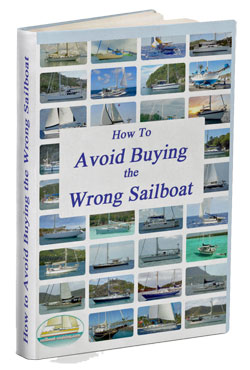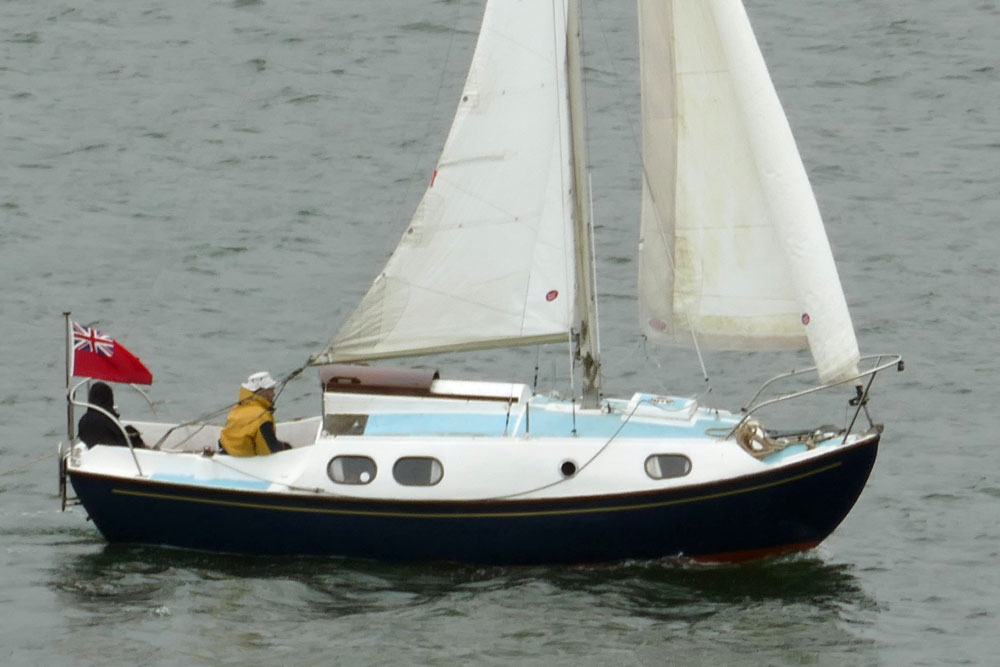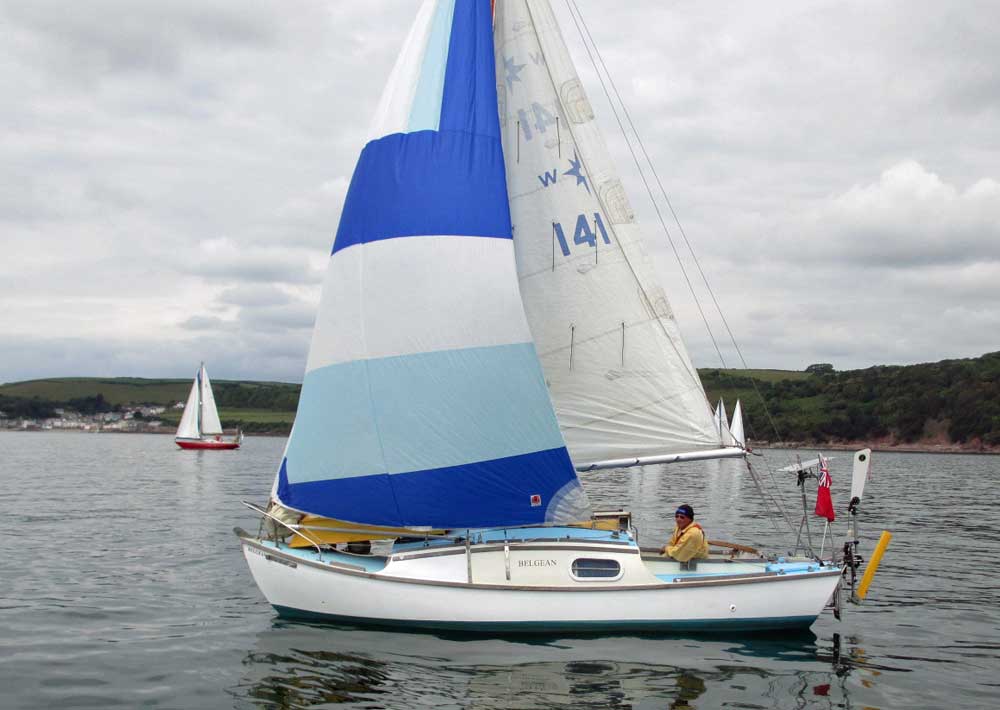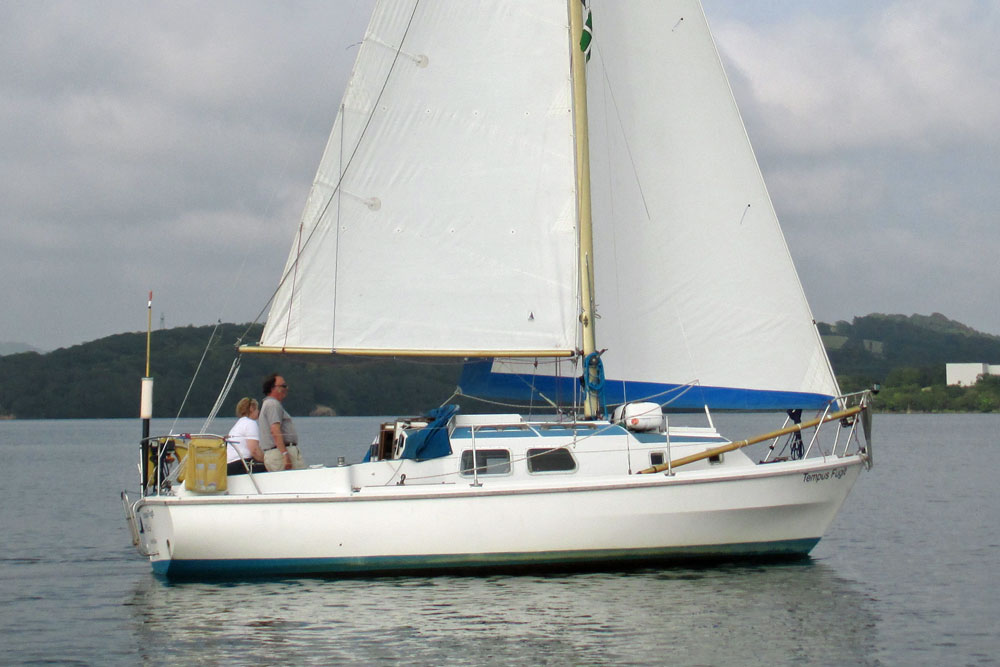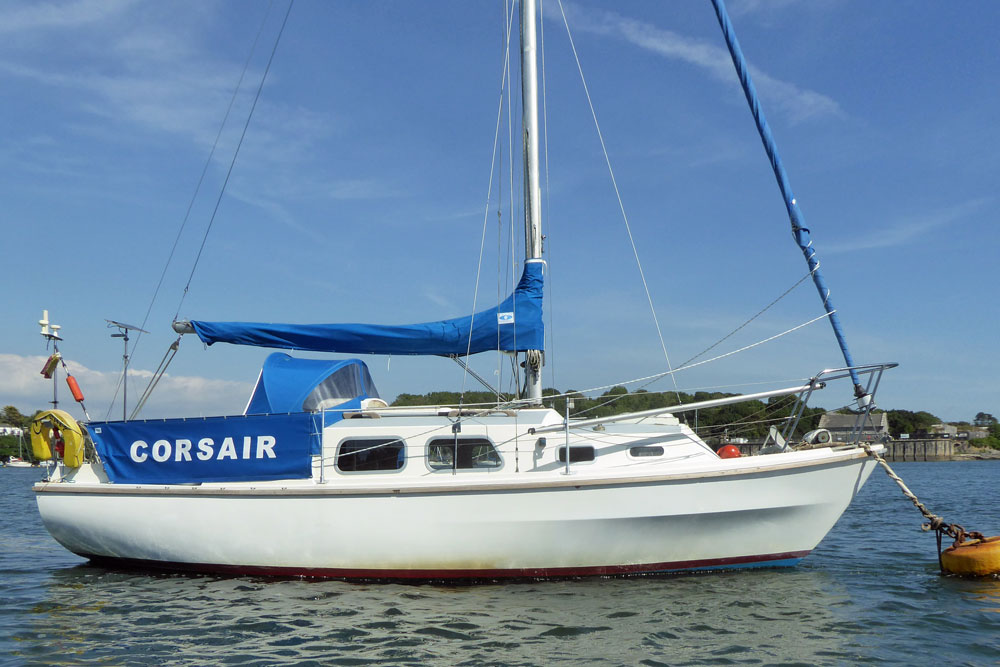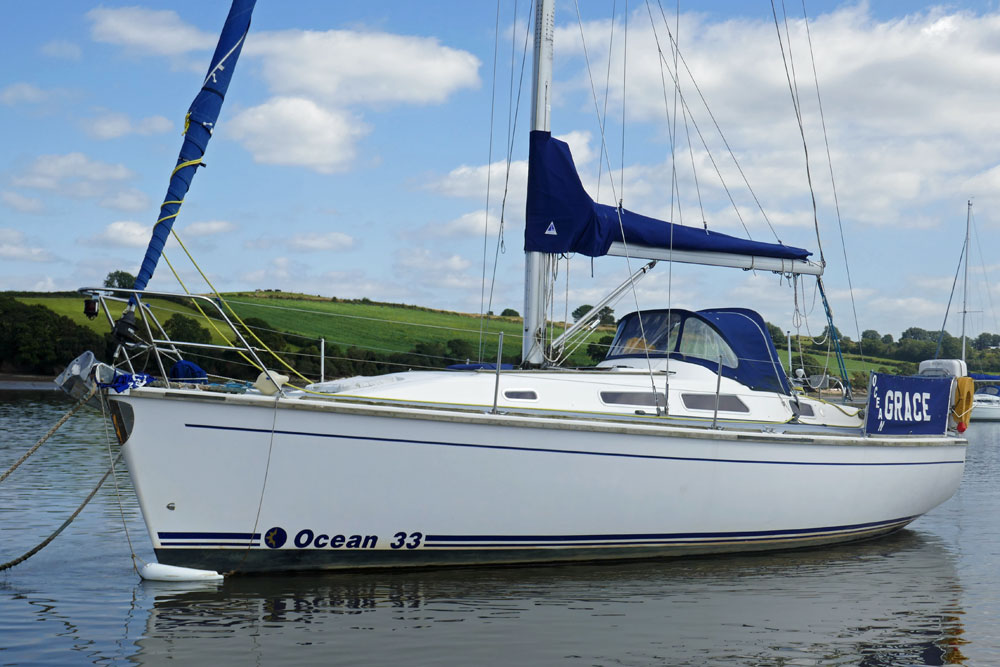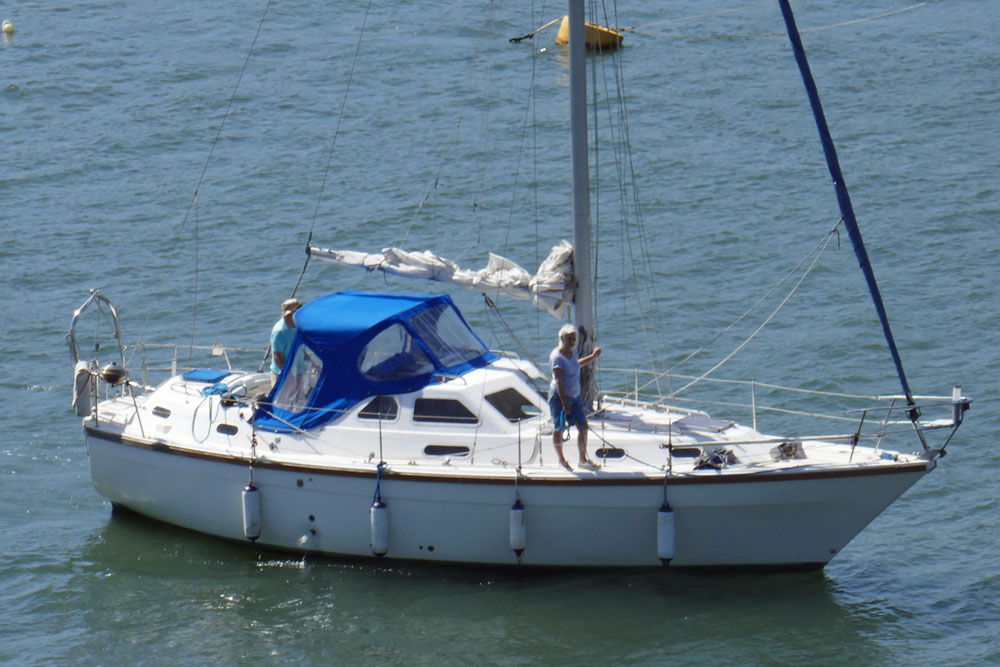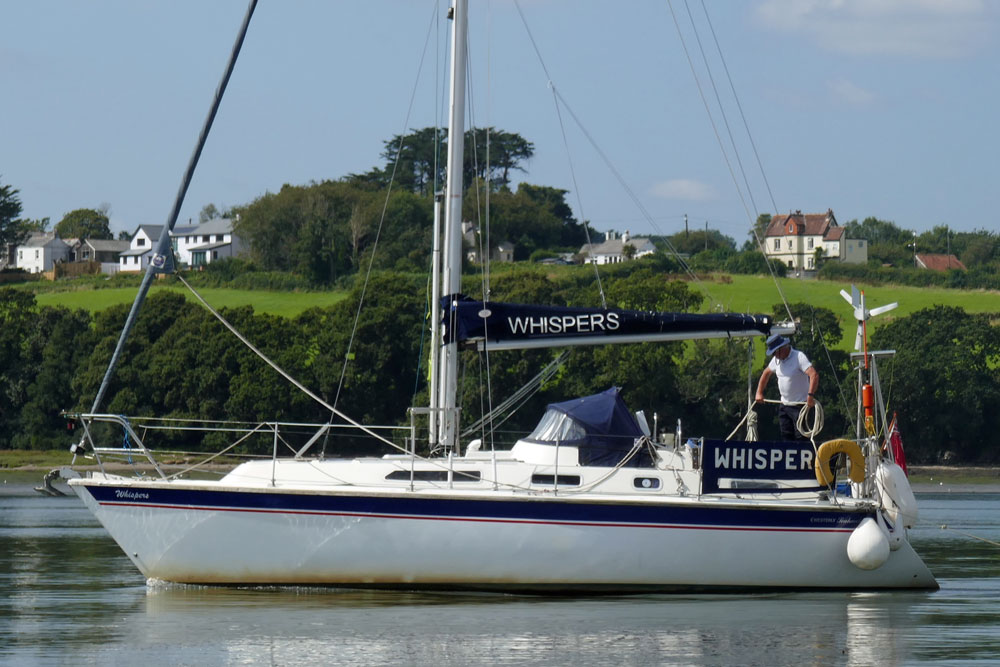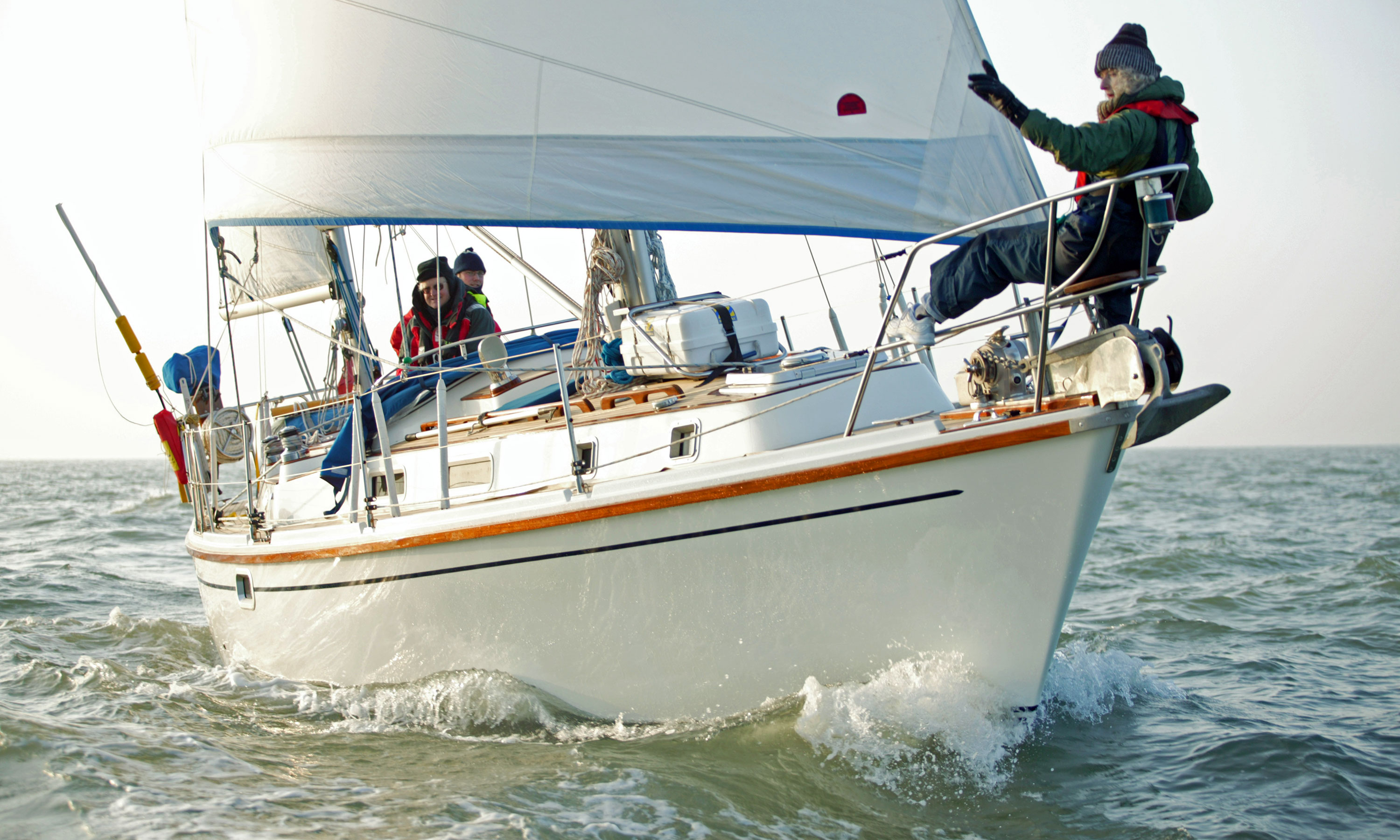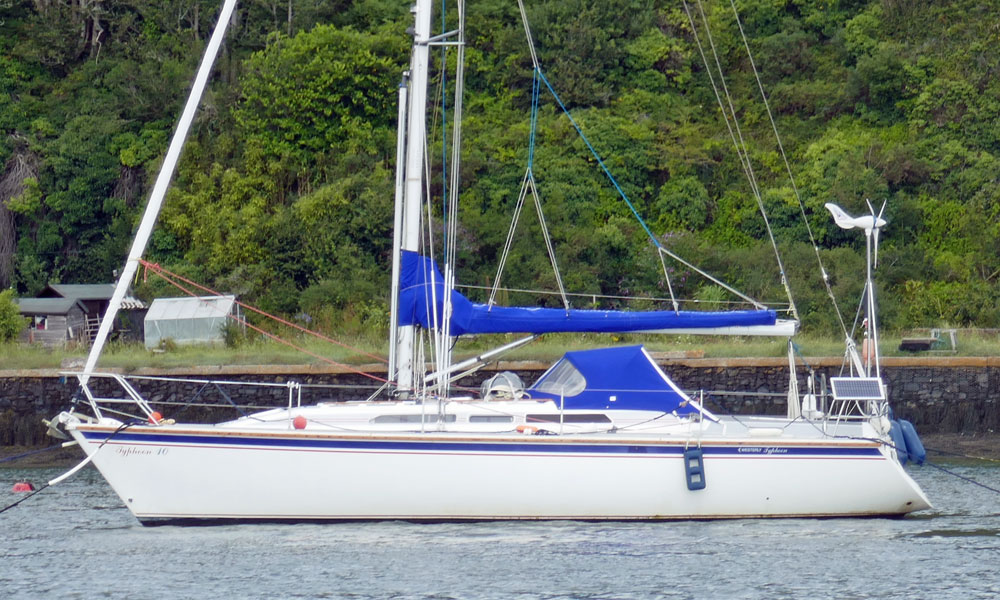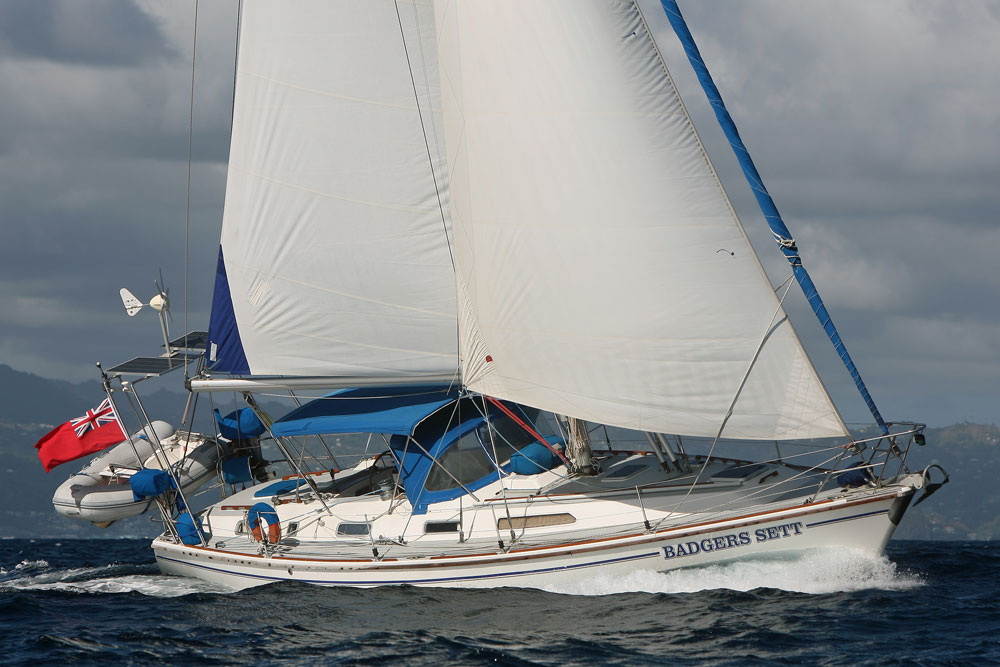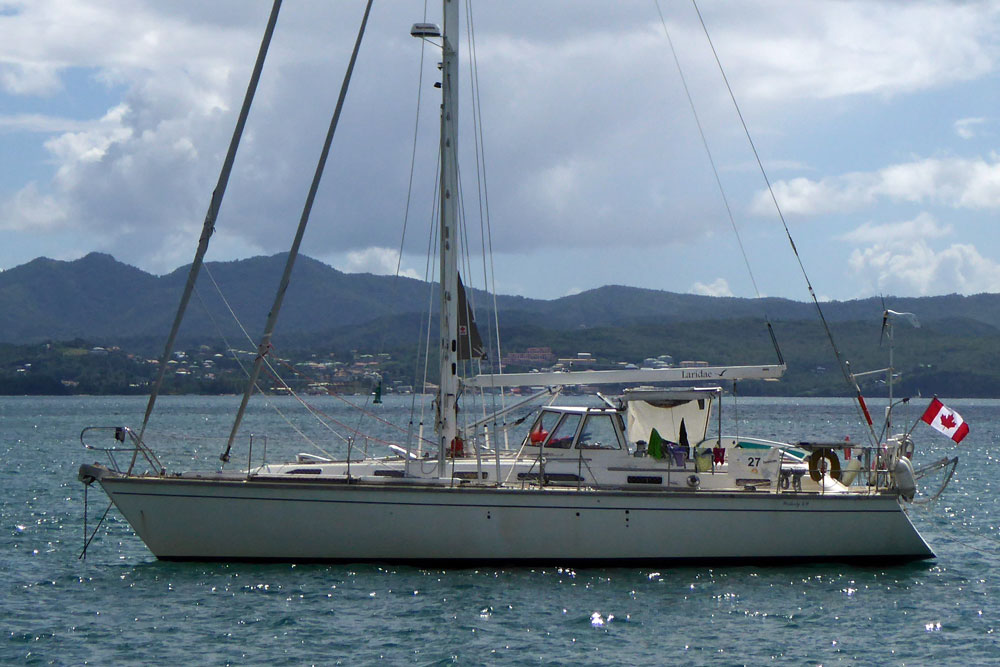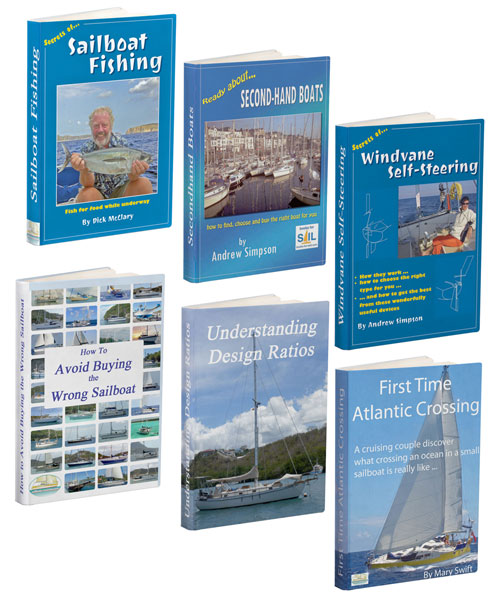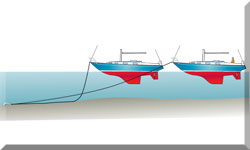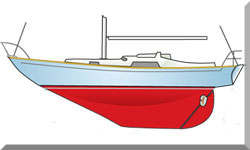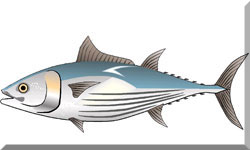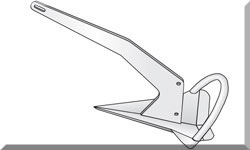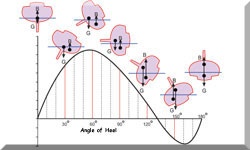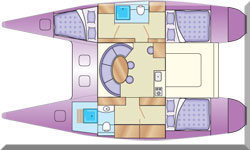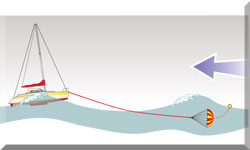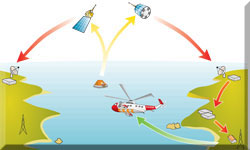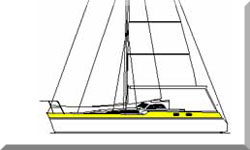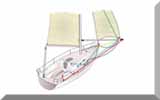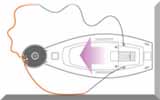- Home
- Cruising Yachts 30' to 35'
- Westerly Kestrel
The Westerly Kestrel 35 Sailboat
Specs & Key Performance Indicators
The Westerly Kestrel 35, an aft-cockpit masthead sloop, was designed by Ed Dubois and built in the UK by Westerly Marine Ltd.
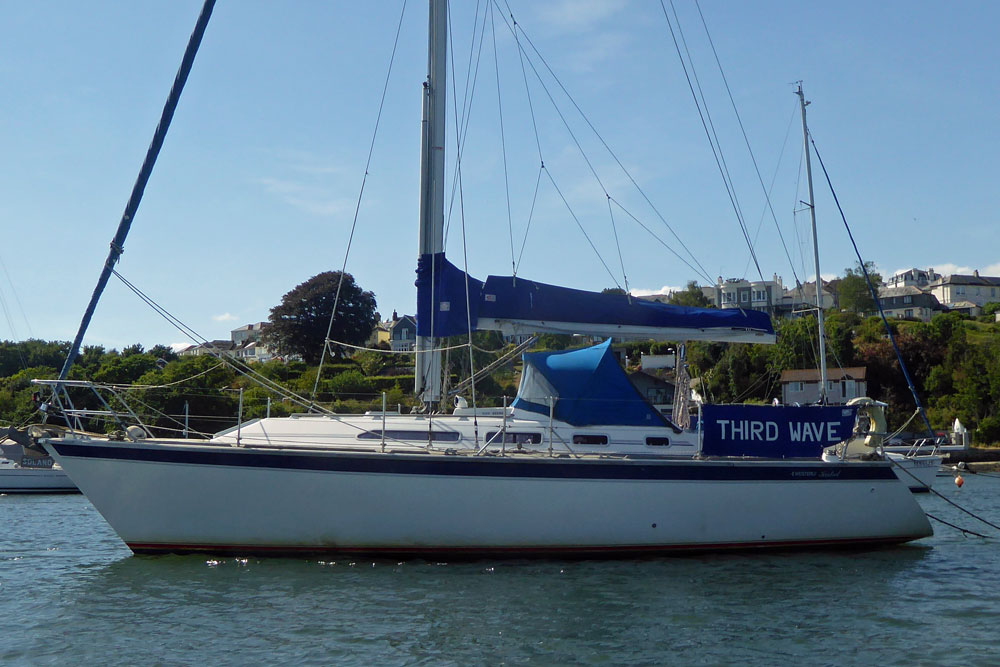
Published Specification for the Westerly Kestrel 35
Underwater Profile: Fin keel & spade rudder
Hull Material: GRP (Fibreglass)
Length Overall: 34'7" (10.5m)
Waterline Length: 27'0" (8.2m)
Beam: 12'3" (3.7m)
Draft: 4'11" (1.5m)
Rig Type: Masthead sloop
Displacement: 14,110lb (6,400kg)
Ballast: 5,710lb (2,590kg)
Designer: Ed Dubois
Builder: Westerly Marine ltd (UK)
Year First Built: 1992
Year Last Built: 1993
Number Built: 5
Published Design Ratios for the Westerly Kestrel 35
1. Sail Area/Displacement Ratio: 15.4
2. Ballast/Displacement Ratio: 40.
3. Displacement/Length Ratio: 320
4. Comfort Ratio: 26.6
5. Capsize Screening Formula: 2.0
Summary Analysis of the Design Ratios for the Westerly Kestrel 35
1. A Sail Area/Displacement Ratio of just 15.4 suggests that the Westerly Kestrel will need a stiff breeze to get her going. In light conditions, unless you've got plenty of time on your hands, motor-sailing may be the way to go.
2. A Ballast/Displacement Ratio of 40.5 means that the Westerly Kestrel will stand up well to her canvas in a blow, helping her to power through the waves.
3. A Displacement/Length Ratio of 320, tells us the Westerly Kestrel is clearly a heavy displacement cruising boat. You can load her down with all your cruising gear and equipment and it will hardly affect her waterline. Not an ideal choice for coastal sailing, but she'll come into her own on an offshore passage in testing conditions.
4. Ted Brewer's Comfort Ratio of 26.6 suggests that crew comfort of a Westerly Kestrel in a seaway is similar to what you would associate with the motion of a coastal cruiser with moderate stability, which is not the best of news for anyone prone to seasickness.
5. The Capsize Screening Formula of 2.0 tells us that a Westerly Kestrel would not be as good a choice of sailboat for ocean passage-making, owing to the increased risk of capsize in strong winds and heavy seas, when compared to a sailboat with a CSF of less than 2.0.
Any Questions?
What other versions of the Westerly Kestrel 35 were built?
What other versions of the Westerly Kestrel 35 were built?
The Westerly Kestrel 35 was based on the same hull design as the earlier Westerly Falcon 34 and the later Westerly Oceanquest 35. The main difference between these models was the interior layout and finish, the deck fittings and the rigging options.
What is the accommodation like in the Westerly Kestrel 35?
What is the accommodation like in the Westerly Kestrel 35?
The Westerly Kestrel 35 has a spacious and comfortable accommodation for up to six people. It has two separate sleeping cabins, one in the forepeak and one in the aft, each with a double berth and a private heads compartment. The main saloon has a U-shaped settee to port that can convert to a double berth, a central table with folding leaves, and a single settee to starboard. The galley is located to port of the companionway and has a two-burner stove with oven, a sink, a fridge and ample storage. The navigation station is opposite the galley and has a large chart table, an instrument panel and a quarter berth.
What, if any, alternative accommodation layout versions are available for the Westerly Kestrel 35?
What, if any, alternative accommodation layout versions are available for the Westerly Kestrel 35?
The Westerly Kestrel 35 was offered with two alternative accommodation layouts: one with an aft cabin with two single berths instead of a double, and one with a larger galley and no quarter berth.
What is the Westerly Kestrel 35 like to sail?
What is the Westerly Kestrel 35 like to sail?
The Westerly Kestrel 35 is a well-balanced and stable sailboat that can handle various sea conditions. It has good performance upwind and downwind, thanks to its efficient hull shape and moderate sail plan. It is easy to sail single-handed or with a small crew, as all the lines are led back to the cockpit. It has good manoeuvrability under power, with a Volvo Penta MD2030 diesel engine of 29 hp and a three-bladed propeller.
What is the average cost of a secondhand Westerly Kestrel 35?
What is the average cost of a secondhand Westerly Kestrel 35?
The average cost of a secondhand Westerly Kestrel 35 depends on the condition, equipment and location of the boat. According to some online listings, the price range is between £34,950 ($44,659) and £59,950 ($76,592) as of July 2023.
Is this boatbuilder still in business?
Is this boatbuilder still in business?
No, unfortunately this boatbuilder is not still in business. Westerly Marine Construction Ltd. was founded in 1963 in Waterlooville, Hampshire, England. It was one of the most successful British boatbuilders, producing over 12,000 yachts of various models and sizes. However, it went into receivership in 1990 and was liquidated in 1993.
What other sailboats have been created by this designer?
What other sailboats have been created by this designer?
This designer is Ed Dubois, a renowned naval architect who specialized in performance cruising yachts. He designed many other sailboats for Westerly Marine Construction Ltd., such as the Fulmar 32, the Seahawk 34, the Storm 33, the Corsair 36 and the Oceanlord 41. He also designed yachts for other builders, such as Wauquiez, Northshore Yachts, Southerly Yachts and Oyster Marine.
The above answers were drafted by sailboat-cruising.com using GPT-4 (OpenAI’s large-scale language-generation model) as a research assistant to develop source material; to the best of our knowledge, we believe them to be accurate.
Other sailboats in the Westerly range include:
Recent Articles
-
Hans Christian 43: Classic Bluewater Cruiser & Liveaboard Sailboat
Dec 10, 25 04:37 AM
Explore the Hans Christian 43: a legendary heavy-displacement, long-keel sailboat. Read our in-depth review of its specs, design ratios, and suitability for offshore cruising and living aboard. -
Planning Your Sailboat Liveaboard Lifestyle: An Ocean Sailor's Guide
Dec 06, 25 05:18 AM
Seasoned sailors share their methodical risk analysis for planning a secure Sailboat Liveaboard Lifestyle, covering financial, property, and relationship risks. -
Marine Cabin Heaters: The Expert’s Guide to Comfort & Safety at Sea
Dec 05, 25 06:52 AM
Choose the best Marine Cabin Heaters for your vessel. Expert advice on diesel, paraffin, and hot water systems for year-round cruising comfort.
